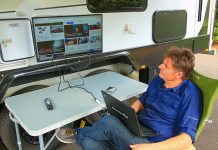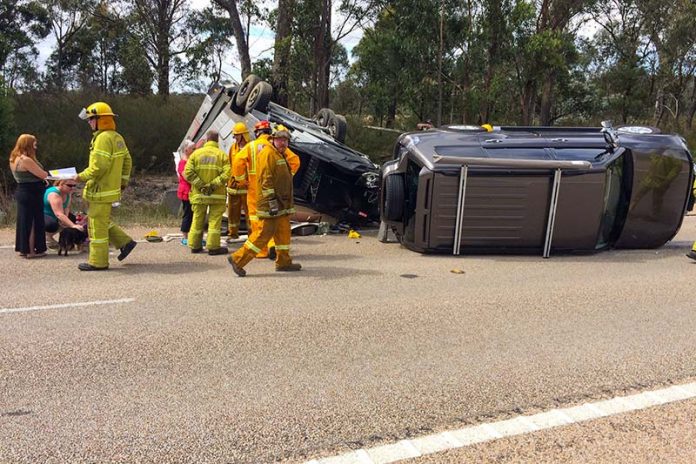
When I was in my early 20s, I had just moved into my own home and I was keen on starting my garden. I wanted some railway sleepers to turn into garden beds, and a friend had about 15 of them lying around in his backyard. He said I could have them if I wanted. So I hitched my dad’s 6×4 trailer to my Dihatsu Feroza and went to collect my treasure. I loaded all 15 of them and started making my way home. That’s when I experienced caravan sway, something I never experienced before, and it scared the proverbial out of me.
As I drove at about 80km/h along the Hume Highway, the trailer started swaying violently, and it sent the poor old Feroza swinging in the opposite direction. I had experienced trailer sway, also known as ‘the wobbles’.

There’s a reason why truckies refer to caravans as ‘wobble boxes’. You’ve more than likely seen videos of caravans getting the wobbles and rolling over, often with catastrophic results. It happens far too often and, with the ever-increasing popularity of caravanning, barely a week goes by without a new dash-cam video of a caravan rollover appearing on social media. It’s a major reason why the cost of caravan insurance is rising. But what causes the wobbles, and what can you do about it if it happens to you?
TRAILER TYPES
When it comes to trailers that are towed using an A-frame, there are two types: dog trailers and pig trailers. Dog trailers have a wheel in each corner of the trailer and are most commonly seen in the trucking world, although there have been examples of caravans with this configuration. This design is extremely stable, as you would imagine; however, they don’t go around corners without the ability to steer the front wheels. This involves a potentially heavy mechanism and a particular skill to reverse, which makes them rare in caravan design.
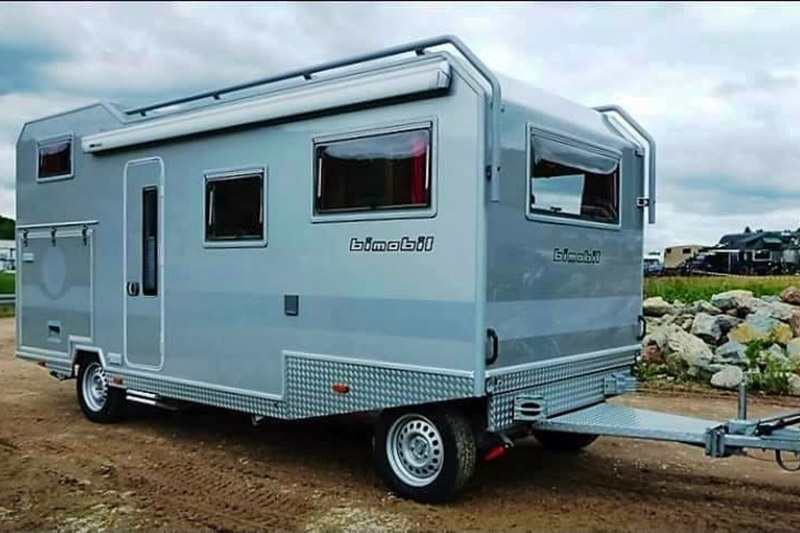
Pig trailers have the axles and wheels somewhere in the middle of the trailer, making steering and reversing easy and not requiring any special mechanism. This is why they are so popular and perfect for light vehicles to tow. But they have an inherent instability caused by the weight of the overhanging front and rear of the trailer. Fortunately, caravan manufacturers are aware of this and design their caravans to minimise the instability.
WHAT CAUSES CARAVAN SWAY?
Before we get too far into the causes of caravan sway, it’s important to understand exactly what they are. Caravan sway is a form of oscillation called ‘mechanical resonance’. If you want to send yourself to sleep, you can Google it, but to put it into simple terms, mechanical resonance is the tendency of mechanical systems to respond with greater force when the frequency of their movement matches the system’s natural frequency of vibration. This can lead to violent swaying motions that often result in catastrophic failure.
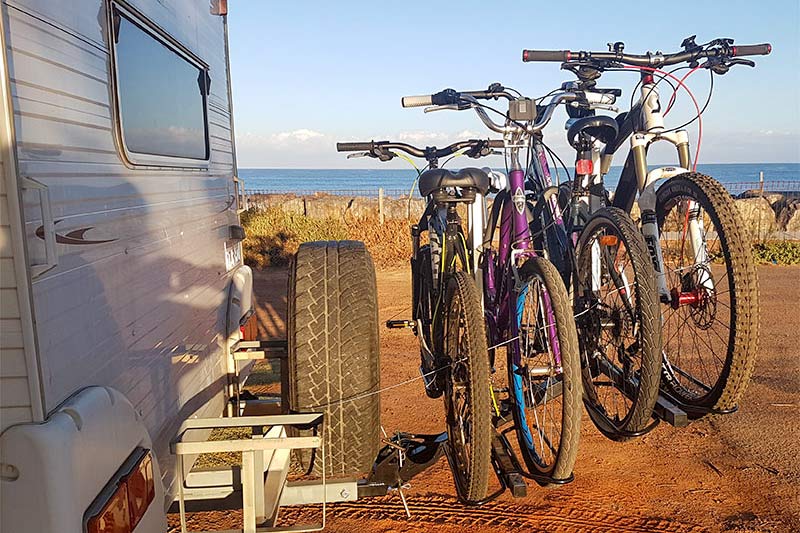
You might seen a famous example of this in a film of the Tacoma Narrows Bridge in the US, where the wind blowing against the side of the bridge caused it to swing and twist rhythmically. When the bridge experienced strong, sustained winds, the ever-increasing swaying eventually led to the bridge tearing itself apart and collapsing.
We see a similar action when a caravan gets the wobbles. It builds with increasing speed, distance and momentum to the point where the tyres of the trailer and the tow vehicle can no longer keep the vehicle upright and on the road.
This all sounds pretty horrible, and you may be thinking it’s just a matter of time before your caravan suffers this fate, but it doesn’t have to. Mechanical resonance doesn’t just happen without the input of some energy. With the Tacoma bridge, that energy came from the wind. With your caravan, it predominantly comes from the speed at which you’re driving, as well as external forces. The faster you drive or the stronger the wind blowing against the caravan, the more likely the vehicle will begin to sway with increasing resonance.
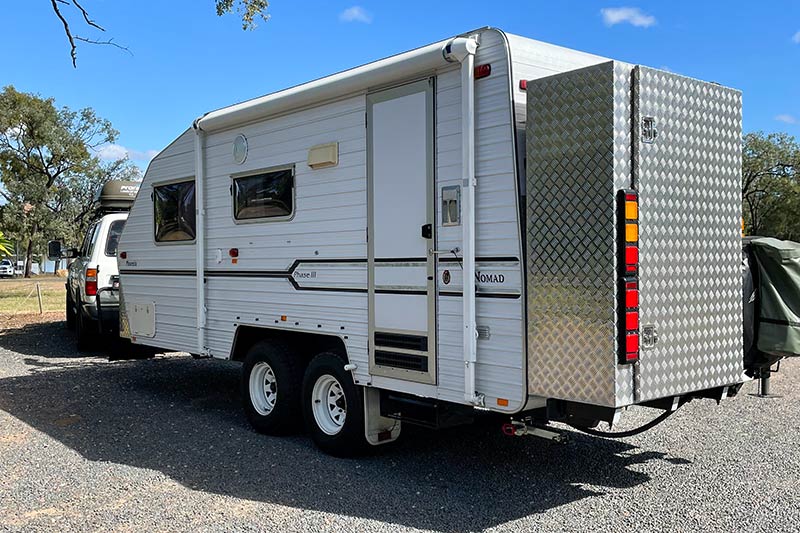
Here are a few common factors that will contribute to caravan sway:
1. Incorrect weight distribution. This site contains an article about correct weight distribution and how important it is for trailer stability. Again, there are plenty of videos showing how having most of the weight positioned in the centre, over the axles or towards the front of the trailer, makes it less likely to sway. But if you put that weight at the extreme front or rear of the trailer, a slight push on the side causes the trailer to sway violently.
2. Trailer length. For any number of axles on a trailer, the longer it is, the greater the lateral force that can be exerted upon it by winds from the side. It also means that any weight towards the extreme ends creates a pendulum effect. This type of swinging or swaying is extremely difficult to control because of the momentum it creates.
3. Road gradient. I don’t know how many times I’ve heard of drivers who experience trailer sway when going down a hill, even though their rig is normally stable. This is due to the effects of gravity on the rear of the trailer, causing it to feel like it’s trying to overtake the tow vehicle.
4. Speed. This is probably the least understood cause of trailer sway. When I was towing my trailer-load of sleepers, it was fine at speeds up to around 65km/h. As I drove faster, the trailer started to sway, and it got worse the faster I drove. It stands to reason that the faster you drive, the more energy you are putting into an already unstable situation.
5. Strong or sudden gusts of wind. Cross-winds are particularly dangerous, especially if they hit the side of your van suddenly, such as when you drive over a bridge. If you see a sign warning of cross-winds, slow down and be prepared for any instability. Another source of strong winds can come from the pressure wave of passing trucks.
AVOID CARAVAN SWAY
It’s quite likely that by reading the aforementioned causes of the wobbles, you will already have a good idea of how to avoid them. In case it has escaped you, here are the golden rules:
1. Ensure correct weight distribution of your caravan. Pig trailers are most stable when 8-10 per cent of their total weight is directly over the tow point. Most caravans are designed so that when you pack them, the weight should be distributed to achieve this ball weight percentage. Placing most of the heavy items you carry low to the floor and over the axles will also contribute towards overall stability.
2. Choose an appropriate tow vehicle for your caravan. You’ve probably heard the expression ‘the tail wagging the dog’. Well, a light-weight tow vehicle (relative to the trailer weight) or one with a short wheelbase may not be a good choice for towing a heavy or long caravan.
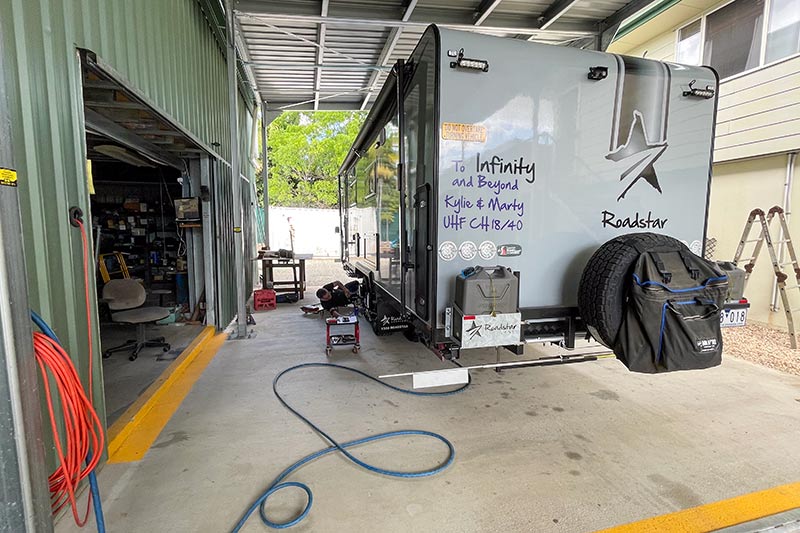
3. Try to ensure the tow attachment point is as close to the rear wheels of the tow vehicle as possible. This is particularly relevant to utes where the tray overhang may necessitate a longer tow hitch.
4. Avoid driving in severe cross-winds. Check the weather for your chosen route and if it shows you will experience strong, gusty winds blowing against the side of your rig, perhaps wait for calmer conditions, especially if you have a long caravan.
5. Ensure your tyres are inflated to the correct pressures for the load they are carrying. Most caravan tyres are under-inflated, particularly very heavy caravans.
6. Slow down! There is no need to drive at or beyond the posted speed limit, and do not be pressured to do so. Drive at a speed that is appropriate for the road and weather conditions. If you have to drive slower than other vehicles, make an effort to allow them to pass you when it is safe to do so.
7. Ensure both your car and trailer are roadworthy and any scheduled servicing is up to date.
8. Make sure your trailer’s electrical connections are working before every drive, particularly to ensure the electric brakes are working.
9. Get your rig weighed by a professional weighing service to ensure you have correct weight distribution.
10. If you have a new caravan, load it up and take it for a test tow away from heavy traffic. Slowly build up to normal cruising speeds and check for any instability.
HOW TO REACT TO CARAVAN SWAY
Here are five very simple steps you can take to regain control over a swaying caravan or other trailer:
1. Remain calm. Do not panic.
2. Don’t touch the tow vehicle’s brakes.
3. Keep the steering wheel pointed straight ahead as much as possible.
4. Gradually release the accelerator and reduce speed until the swaying stops.
5. If the trailer is fitted with electric brakes, activate them manually using the override feature on your brake controller.
Once the vehicle has regained stability, slow down and pull off the road at the first safe opportunity. Check the caravan and tow vehicle for anything that may have contributed to the situation, such as low tyre pressures, load imbalance, etc.
Do not try to accelerate out of the caravan sway. You may have had some old-timer tell you this how you stop the wobbles. But by adding additional energy into an already unstable situation, this will likely make the situation worse.
A FINAL WORD OF ADVICE
Everything I have said in this article is all well and good in theory. The reality is that you will forget most of what you’ve read here, and that the wobbles will occur so quickly and unexpectedly that you will panic and do the wrong thing. That’s just human nature.
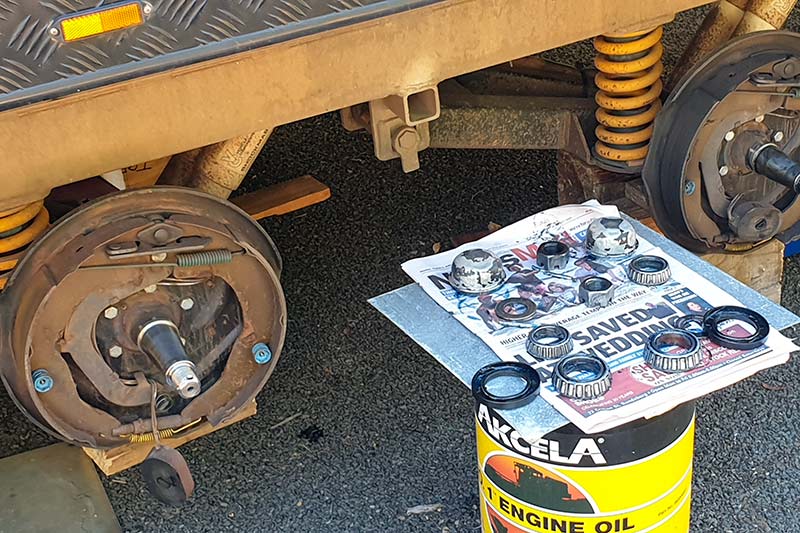
The most common reaction to a swaying caravan by an inexperienced driver is to hit the brakes. If you’ve never experienced the wobbles before, it is what you will likely do out of instinct.
Therefore, one thing you could do, if you have a caravan fitted with electric brakes, is to dial the brakes to a higher setting when driving at higher speeds, such as on motorways. Then, if you get the wobbles at speed and it happens very suddenly, and you hit the brakes out of instinct, the trailer brakes should bite immediately as hard as they can. This will slow the caravan more than the tow vehicle, stopping the sway and ‘pulling’ the rig straight.
It’s not as effective as the controlled method I described earlier, but it should work, and it could just save your life.
If you’re wondering what happened to me and my swinging trailer-load of sleepers, fortunately, I didn’t panic. Having had some driver training and 4WDing experience, my initial reaction was to simply lift my foot off the accelerator and slow down. This stopped the swaying immediately, allowing me to pull over and unload some of the weight.
Whether it was good luck or good management, I survived to tell you about it.
‘SWAY BAR’ MYTH
Weight distribution hitches are not anti-sway bars! You may have heard of people referring to weight distribution hitches as ‘sway bars’. This is incorrect and can lead to dangerous assumptions.
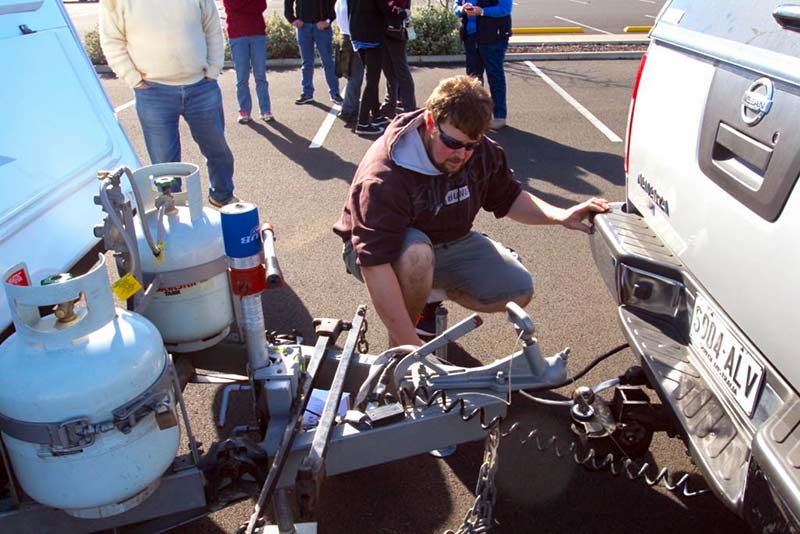
Weight distribution hitches are used to redistribute some of the towball weight off the rear axle of the tow vehicle onto the front axle and to the trailer itself. While these can improve the stability of a rig, they do nothing to stop a swaying caravan.
Some weight distribution hitches can be fitted with optional sway control devices. These use friction or motion dampeners to inhibit swaying.
CARAVAN SWAY CONTROL
Caravan sway control is a great caravan safety feature but do not rely on it! Many modern tow vehicles and caravans come fitted with some form of electronic sway control. These use the car’s or trailer’s brakes to oppose any sideways motion when sway is detected. While these systems are very effective, they can induce a false sense of security. Just because your rig has some form of electronic sway control, doesn’t mean you can ignore all the preventative measures suggested to ensure your caravan is stable. These systems are good, but they have their limitations.



